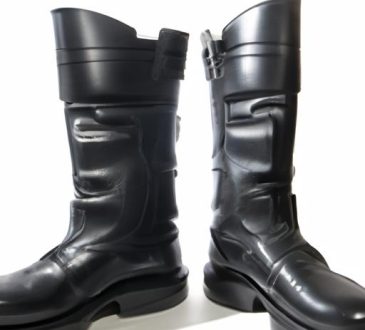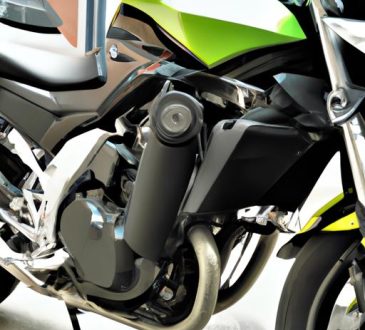
As passionate cyclists, we all know the thrill and freedom that comes with hitting the road or trail on two wheels. But amidst the excitement, it’s crucial to prioritize our safety. And that’s where bike helmets play a pivotal role. In this article, I want to introduce you to a game-changing innovation in helmet technology: MIPS. Strap on your helmet and let’s dive into the world of MIPS bike helmets.
1. Introduction
Picture this: you’re cruising down a scenic road, wind in your face, feeling invincible. But what if an unexpected accident occurs? A bike helmet serves as your shield, safeguarding your most vital organ – your brain. Wearing a helmet significantly reduces the risk of severe head injuries and concussions. However, not all helmets are created equal.
Enter MIPS, an abbreviation for Multi-directional Impact Protection System. Developed by a team of experts, MIPS is revolutionizing the way helmets protect our heads. So, what exactly is a MIPS bike helmet, and how does it differ from conventional helmets?
MIPS technology is a groundbreaking addition to helmet design that addresses the rotational forces experienced during an impact. Traditional helmets primarily focus on linear impacts, but MIPS takes it a step further by tackling rotational forces. By doing so, it significantly enhances the helmet’s ability to mitigate brain injuries, offering you a higher level of protection.
In the next section, we’ll delve deeper into the world of MIPS bike helmets and explore how this innovative technology works. So, fasten your seatbelts, or rather, strap on your helmet, as we unravel the mysteries of MIPS.
what is a mips bike helmet? Understanding the Revolutionary Technology
2. What is MIPS?
At the core of understanding a MIPS bike helmet is grasping the concept behind MIPS itself. MIPS stands for Multi-directional Impact Protection System, and it’s a cutting-edge technology designed to address the rotational forces that occur during an impact.
2.1 Definition and Explanation of MIPS
To put it simply, MIPS is an additional layer of protection built into the helmet. It consists of a low-friction liner that allows the helmet to rotate slightly upon impact. This rotation mimics the natural movement of the brain inside the skull, reducing the rotational forces transmitted to the brain.
By integrating MIPS technology into the helmet’s design, manufacturers aim to provide enhanced safety for cyclists. When subjected to an angled impact, the MIPS system allows the helmet to redirect and disperse the rotational forces, reducing the risk of brain injuries.
2.2 How MIPS Improves Helmet Safety
Conventional helmets work by absorbing the energy from a direct impact with their protective foam layer. While this helps in mitigating linear forces, it doesn’t address the rotational forces that can occur during accidents. This is where MIPS technology steps in.
MIPS helmets are equipped with a low-friction layer that sits between the comfort padding and the EPS foam liner. During an impact, this layer allows the helmet to slide slightly, redirecting the rotational forces away from the head. By reducing the strain on the brain caused by rotational impacts, MIPS helmets have been shown to decrease the risk of severe brain injuries.
With MIPS, you can ride with confidence, knowing that your helmet is designed to provide comprehensive protection. In the upcoming sections, we’ll delve deeper into how MIPS technology works and the specific benefits it offers. So, let’s continue our exploration of this groundbreaking innovation.
How Does MIPS Work? Unveiling the Inner Mechanics of MIPS Bike Helmets
3.1 Internal Components and Design of a MIPS Helmet
To truly appreciate the effectiveness of MIPS technology, let’s take a closer look at the internal components and design of a MIPS helmet. Unlike traditional helmets, which consist of a single layer of protection, MIPS helmets incorporate an added layer of security.
At the core of a MIPS helmet lies a low-friction layer, strategically placed between the outer shell and the inner padding. This layer allows for independent movement between the two, mimicking the brain’s own protective mechanism. In the event of an angled impact, the low-friction layer enables the helmet to rotate slightly, redirecting the rotational forces away from your head.
3.2 The MIPS System: Allowing for Rotational Movement
Now, let’s imagine the MIPS system as a well-oiled machine, working harmoniously to protect your precious brain. When an impact occurs, the MIPS system activates, absorbing and redirecting the rotational forces away from your head.
Here’s how it works: upon impact, the low-friction layer within the MIPS helmet allows the outer shell to rotate slightly in relation to the inner padding. This rotational movement disperses the energy across a larger surface area, reducing the concentrated force transmitted to your head. By minimizing rotational forces, MIPS technology helps mitigate the risk of brain injuries and concussions.
Think of it as a shock absorber for your brain. Just as a car’s suspension system absorbs the bumps on the road, the MIPS system absorbs the rotational forces, ensuring a smoother, safer ride.
In the next section, we’ll explore the numerous benefits of using a MIPS bike helmet, shedding light on why it’s become a game-changer in the world of cycling safety. So, stay tuned, as we unravel the advantages that MIPS technology brings to the table.
Benefits of Using a MIPS Bike Helmet
When it comes to protecting our heads, we want nothing but the best. MIPS bike helmets offer a range of benefits that set them apart from traditional helmets. Let’s explore the advantages of opting for a MIPS helmet:
A. Enhanced protection against brain injuries and concussions
Your brain is irreplaceable, and protecting it should be a top priority. MIPS technology provides an added layer of defense against brain injuries and concussions. By addressing rotational forces, MIPS helmets reduce the risk of brain trauma during an impact. This innovative system allows the helmet to move independently of your head, dissipating rotational energy and minimizing the potential damage to your brain.
B. Reduction in rotational forces transmitted to the head during accidents
Unlike conventional helmets, which primarily protect against linear impacts, MIPS helmets excel in mitigating rotational forces. These rotational forces can occur during falls or collisions and can lead to severe brain injuries. MIPS technology significantly reduces the rotational forces transmitted to your head, decreasing the likelihood of trauma. With a MIPS helmet, you can ride with peace of mind, knowing that you have an extra layer of protection against these harmful forces.
C. Studies and research supporting the effectiveness of MIPS helmets
Don’t just take our word for it; scientific studies and research back the effectiveness of MIPS helmets. Numerous independent studies have shown that MIPS technology can reduce the risk of brain injuries and concussions. In fact, a study published in the Journal of Neurosurgery revealed that MIPS helmets reduced rotational acceleration by up to 43% compared to non-MIPS helmets. These findings highlight the tangible benefits of MIPS technology and its ability to enhance helmet safety.
As we’ve explored the benefits of using a MIPS bike helmet, it’s clear that this technology offers superior protection against brain injuries and concussions. The reduction in rotational forces and the scientific evidence supporting its effectiveness make MIPS helmets an excellent investment for your safety on the road or trail. In the following section, we’ll guide you on how to choose the right MIPS helmet for your needs.
Choosing the Right MIPS Bike Helmet
When it comes to selecting the perfect MIPS bike helmet, there are a few essential factors to consider. Let’s explore these aspects to ensure you make an informed decision that prioritizes your safety and comfort.
A. Factors to consider when selecting a MIPS helmet
- Fit: A helmet should fit snugly on your head without any wobbling or discomfort. Look for adjustable straps and retention systems that ensure a secure fit.
- Comfort: Long rides demand a helmet that doesn’t cause discomfort or pressure points. Consider features like padding, ventilation, and adjustable retention systems to ensure a comfortable experience.
- Style: While safety is paramount, there’s no harm in expressing your personal style. Choose a MIPS helmet that matches your aesthetic preferences, whether it’s sleek and minimalist or vibrant and eye-catching.
B. Comparison of different brands/models offering MIPS technology
The market is flooded with various brands and models offering MIPS technology. To make an informed choice, compare and evaluate helmets based on the following criteria:
- Safety Certifications: Look for helmets that meet recognized safety standards such as CPSC, EN, or ASTM certifications.
- MIPS Integration: Assess how each brand incorporates MIPS technology into their helmet designs. Some brands integrate it seamlessly into the helmet’s construction, while others use MIPS inserts.
- Additional Features: Consider supplementary features like adjustable visors, aerodynamic designs, and compatibility with accessories such as lights or cameras.
C. Recommendations for specific activities
Different cycling activities require different helmet features. Here are some recommendations based on specific activities:
- Road Cycling: Opt for a lightweight MIPS helmet with excellent ventilation to keep you cool during long road rides.
- Mountain Biking: Look for a MIPS helmet with enhanced coverage and added protection, such as extended rear coverage and MIPS Spherical or 360-degree systems.
- Commuting/Urban Cycling: Prioritize helmets with integrated safety features like reflective elements or integrated lights, ensuring visibility in urban environments.
By considering these factors and recommendations, you can confidently choose the right MIPS bike helmet that suits your needs and enhances your cycling experience. Remember, your helmet is your ultimate ally in protecting your most valuable asset – your brain.
Conclusion
Now that you’re well-versed in the world of MIPS bike helmets, it’s time to prioritize your safety and make an informed decision when choosing a helmet. Remember, your brain is priceless, and investing in a high-quality helmet equipped with MIPS technology is a small price to pay for the peace of mind it brings.
At insurance.codepel.com, we understand the importance of protecting what matters most to you. That’s why we emphasize the significance of MIPS bike helmets in reducing the risk of severe head injuries and concussions. By incorporating MIPS technology into their helmets, manufacturers demonstrate their commitment to rider safety.
So, whether you’re a seasoned cyclist, a casual rider, or a parent looking out for your child, make sure to opt for a MIPS bike helmet. With enhanced protection against rotational forces and a proven track record of effectiveness, MIPS helmets are the way to go.
Remember, safety should never be compromised. Equip yourself with the best helmet possible and ride with confidence, knowing that you’re taking the necessary steps to safeguard your head and brain. Let’s make every ride a safe and enjoyable one!
At insurance.codepel.com, we’re dedicated to providing you with valuable information and resources to protect yourself and your loved ones. Stay tuned for more articles on bike safety, insurance tips, and everything you need to know to navigate the world of cycling with confidence.
Ride safe, ride smart, and always wear your MIPS bike helmet!
Bold emphasis: insurance.codepel.com



